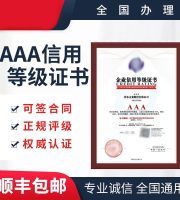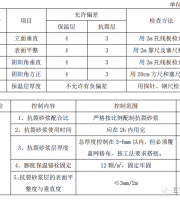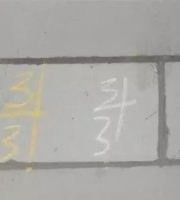Here we will build the composition of your “honeycomb of thought” duct system, the classification of duct name and pressure range according to the pressure classification of duct name pressure range flow rate range common pressure [PA] {mmaq} limit pressure [PA] {mmaq} low pressure duct + 490 {+ 50} below – 490 {- 50} below + 980 {+ 100} below – 735 {- 75} below 15 high pressure 1 duct over + 490 {+ 50} below + More than – 490 {- 50} below 980 {+ 100} – Below 980 {- 100} + below 1470 {+ 150} – below 1470 {- 150} and below 20 high pressure 2 duct exceeds + 980 {+ 100} + More than – 980 {- 100} below 2450 {+ 250} – Below 1960 {- 200} + below 2940 {+ 300} – below 2450 {- 250} and below 20 design related units, commonly used pressure unit Pascal (PA): international standard pressure unit, indicating Newton force per square meter
.
Kg / cm ²( Kg/cm ²): It is mainly used to indicate the pressure inside the air conditioning system
.
Millimeter mercury (mmHg): mainly used to indicate the atmospheric pressure
.
Millimeter water column (mmh2o): it is mainly used to indicate the pressure of air flow and is mainly used in the design of air duct; It is also used to express the resistance of air
.
Conversion of various pressure units: standard atmospheric pressure = 760mmhg = 10.33mh2o = 1kg / cm ²= 0.1MPa; The basic parameters of static pressure, dynamic pressure and total pressure introduce the external static pressure (discharge part + suction part)
.
The pressure loss calculated here is called external static pressure
.
The so-called resistance inside the air conditioner refers to the loss part inside the air conditioner (coil, filter, shell)
.
Duct design method and step constant velocity method is a method to determine the velocity (wind speed) of each part of the duct in advance and determine the sectional area size of the duct
.
Although the speed has been determined, due to the different friction loss of each part and the more air ducts in the branch part, this method is not practical, so it is hardly used
.
Application: pneumatic conveying powder
.
Constant pressure method (equal friction method, constant pressure method) takes the loss per meter of air duct as the planting method
.
When the standard loss is determined, the air supply volume of each part is planted with the loss, and the repeated operation of determining the wind speed is automatically formed
.
When the reference loss is calculated when the air duct is extended to the maximum length, the loss of the straight pipe can be obtained immediately
.
This method has become the mainstream of duct design
.
The static pressure recovery method is applied to the high speed air duct which is rarely seen at present
.
According to the established principle of Pt = PS + PV, the total pressure method is designed according to the total pressure standard
.
This is the most reasonable method in the existing duct design, and has become the mainstream of duct design
.
Duct system design steps duct design 1
.
The air velocity in the duct is paid special attention to the air velocity mainly to deal with noise
.
If the wind speed is high, a thin air duct can be used to save the engineering cost
.
But in turn, it is not economical to increase the power of the motor
.
The maximum value of low-speed air duct (M / s) field, so the noise control is based on friction resistance to control the main air duct air supply main air duct air return main air duct air supply branch air return branch residential 35433 apartment, hotel guest room 57.56.565 office, library 6107.586.1 medium and large-scale meeting hall 46.55.55.4 bank, high-grade restaurant 7.5107.58.6 department store 9107.586 standard friction loss per unit length (isobaric method) has always been in low-speed air duct
.
0.8 – 1.5 PA / M (average 1.00 PA / M) for the supply air duct and 0.6 – 1.0 PA / M (average 0.82 PA / M) for the return air duct
.
The reason for reducing the wind speed of the return duct here is not only to deal with noise, but also the strength of the duct
.
Because the return air pipe is located in the suction part, opposite to the air pipe, it is subject to external pressure, so its load should be reduced
.
Conversion of circular duct to square duct ³/ h) If the standard friction loss (PA / M) has been determined, the friction loss, wind speed and circular duct diameter can be read out from the “duct resistance line diagram” in the book
.
Once the diameter of the circular duct is read out, the size can be changed from circular to square
.
At this point, it is wrong to think that no matter round or square, as long as the cross-sectional area is the same
.
This is because the outside perimeter of the duct is different
.
For example: the sectional area is 1m ² The side length of the square duct is 4m
.
The side length of the corresponding circular duct is 3.54M, which is 13% less than that of the square duct
.
The larger the ratio of the long side to the short side of the square duct, i.e
.
the aspect ratio, becomes, the larger the difference becomes when it becomes a flat rectangular duct
.
The setting of aspect ratio the larger the aspect ratio is, the larger the perimeter of the air duct will be, which will cause the following problems: 1 The production cost of air duct increased by 2 The heat loss on the surface of the duct increases by 3 The pressure loss of air duct increases
.
4 the bias flow caused in the air duct will also cause the fluctuation of air volume
.
The corresponding method is to reduce the aspect ratio
.
Ideal ratio: H / w = 4 – 8 H: Duct height W: Duct width: R / D = 1.5-2.0 r: Turning radius D: Allowable wind speed of round duct diameter main duct and branch duct low speed duct high speed duct living room public building factory public building factory fresh air inlet 2.5 ~ 4.02.5 ~ 4.92.5 ~ 6.05.06.0 main duct 3.5 ~ 6.05.0 ~ 8.06.0 ~ 1125.030.0 branch duct 3.0 ~ 5.03.0 ~ 6.54.0 ~ 9.010.015.0 air filter 1.2 ~ 1.51.5 ~ 1.81.5 ~ 1.83.03.0 heating / cooling exhaust 2.2 ~ 2.52.5 ~ 3.02.5 ~ 3.03.03.0 I Determination of ventilation quantity Q: ventilation quantity Q [M] required in air conditioning equipment ³/ h] QS: sensible heat load [kW] CP: constant pressure specific heat of air [kJ / (kg
.
℃)] ρ: Air density [kg / M] ³] CP ρ= 1.2kJ/(m ³
.
Tr: room temperature [℃] ts: spray outlet temperature [℃] SHC × 860=Q × 60 ×( 1/V) × 0.24 × ⊿t[kW] ×[ kcal/h・kW]= [ m3/min] ×[ min/h] ×[ kg/m3] ×[ kcal/kg・℃] ×[ ℃] SHC: sensible heat of refrigeration (kw) Q: air supply volume V: specific volume of blowing outlet (M3) / Kg) ⊿ T: temperature difference between blowing out and suction (℃) can be obtained from equation (1): ⊿ t = Shc × 860 × V/(Q × 60×0.24 assuming v = 0.82 ⊿ t ≈ shx49 / Q, there will be no temperature difference when the capacity decreases.
.




